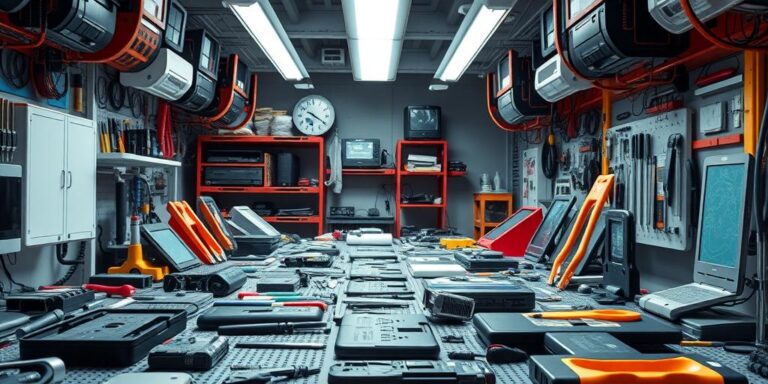The Growing Momentum Behind Repairable Gadgets
In 2025, the “Right to Repair” movement continues to gain traction, marking a significant shift in how consumers and manufacturers view electronic devices. This movement advocates for laws that require manufacturers to provide consumers and independent repair shops with the parts, tools, and information needed to fix their own electronics and equipment. This article explores the current state of the Right to Repair movement, its key drivers, and its potential impacts on the tech industry and consumers.
What is the Right to Repair?
The Right to Repair is a global movement pushing for legislation that compels manufacturers to make repair resources accessible. These resources include diagnostic software, service manuals, and genuine replacement parts. The goal is to empower consumers and independent repair shops, reducing the reliance on manufacturer-authorized service centers.
Key Drivers Behind the Movement
Several factors have contributed to the rise of the Right to Repair movement:
- Consumer Demand: Consumers are increasingly frustrated with the limited repair options available for their devices. Many feel forced to replace devices prematurely due to costly or inaccessible repairs.
- Environmental Concerns: The e-waste crisis is a growing global issue. Encouraging repair and extending the lifespan of electronics can significantly reduce e-waste and its environmental impact.
- Economic Benefits: Independent repair shops and smaller businesses stand to benefit from increased access to repair resources, creating new jobs and economic opportunities.
- Sustainability Goals: Many governments are setting ambitious sustainability targets. The Right to Repair aligns with these goals by promoting a circular economy and reducing resource consumption.
Current State of Legislation (2025)
As of 2025, several countries and regions have enacted or are considering Right to Repair legislation. The European Union has been a frontrunner, with comprehensive regulations aimed at promoting repairability and extending the lifespan of electronic devices. In the United States, various states have introduced Right to Repair bills, with some achieving successful passage into law. These laws often target specific industries, such as consumer electronics and agricultural equipment.
Impacts on the Tech Industry
The Right to Repair movement is already having a noticeable impact on the tech industry:
- Design Changes: Manufacturers are beginning to design products with repairability in mind, making devices easier to disassemble and repair.
- Availability of Parts and Information: Some companies are voluntarily providing repair manuals and selling genuine replacement parts directly to consumers and independent repair shops.
- New Business Models: The rise of independent repair shops and online repair communities is creating new business opportunities and fostering innovation in the repair sector.
Challenges and Opposition
Despite its growing momentum, the Right to Repair movement faces significant challenges:
- Manufacturer Resistance: Some manufacturers argue that providing repair resources could compromise intellectual property and product safety.
- Complexity of Modern Devices: Modern electronics are becoming increasingly complex, making repairs more challenging even with access to repair resources.
- Enforcement Issues: Ensuring compliance with Right to Repair laws can be difficult, requiring effective monitoring and enforcement mechanisms.
Looking Ahead
The Right to Repair movement is poised to continue its growth in the coming years. As consumers become more aware of their rights and the benefits of repairability, the pressure on manufacturers to embrace repair-friendly practices will likely intensify. The movement represents a fundamental shift towards a more sustainable and consumer-centric approach to technology.
Key Takeaways
- The Right to Repair movement advocates for accessible repair resources.
- Consumer demand, environmental concerns, and economic benefits drive the movement.
- Legislation is being enacted globally to promote repairability.
- The tech industry is adapting with design changes and new business models.
- Challenges remain, including manufacturer resistance and enforcement issues.




